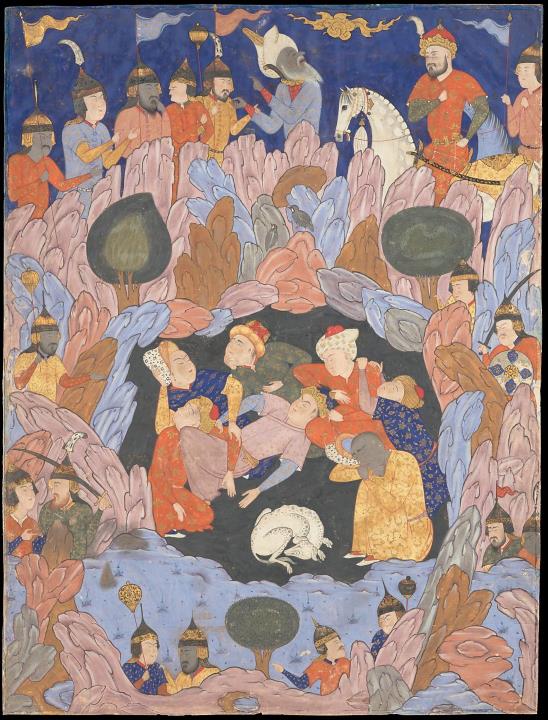Οι εν Εφέσω επτά παίδες
- Oral Tradition
- Religion
- Adults
- Time Phenomena
- Ancient Greek
- Οι εν Εφέσω επτά παίδες [The seven children of Ephesus], early Christian legend, circa AD 400.
Seven or eight young Christian children—or possibly young men or even soldiers—hide in a cave to escape Roman persecution, but once in the cave, they fall asleep for centuries.
—Michael Main
Tags
(6)
- Time Periods
- Themes
- Long Sleep, Cryogenics, Etc.
- Money Difficulties: According to a reddit post, one awakened “sleeper attempted to use Decius-era coins, which caused a lot of unwanted attention.”
- Real-World Tags
- Decius
- Roman Empire: during the time that Christians were persecuted in the Roman Empire
- Theodosius II
Variants
(1)
- Οι εν Εφέσω επτά παίδες [The seven children of Ephesus], early Christian legend, circa AD 400.
Translations
(4)
- English: translation of de Voragine’s Latin recounting.The Seven Sleepers of Ephesus, recounted by Jacques de Voragine, translated by S. Baring-Gould, in Curious Myths of the Middle Ages by S. Barring-Gould (Roberts Brothers, 1867).
- Classical Syriac: recounting.ܛܲܠܝܹ ܕܥܐܦܣܘܣ [Youths of Ephesus], recounted by Jacob of Serugh, based on Lost Greek sources, circa AD 475.
- Latin: recounting.Passio Sanctorum Martyrum Septem Dormientium apud Ephesum [The passion of the seven holy martyrs sleeping at Ephesus], recounted by Gregory of Tours, manuscript, circa AD 574 [modern release in Gregorii Turonensis opera, vol. 2: Miraclula et opera minora, edited by Wilhelm Arndt and Bruno Krusch (Hahn, 1885)].
- Latin: recounting.De septem dormientium [The seven sleepers], recounted by Jacques de Voragine, in Legenda aurea, circa 1266.
Indexer Notes
(4)
- Title of the Syriac Variant—The Romanized title Ṭalyē d-Efesōs is the most common Syriac title that we found. For example, see the article on the Birmingham Manuscript at the Pfander Center. They give the translation to English is “Youths of Ephesus,” but I have a vague memory that Ephesus has a different Syriac name. Even so, we decided to use that as the handle. I used Wikipedia's Romanization guide and the Lexilogos Syriac keyboard to attempt a reverse of the Romanized title back to Syriac script. My result is undoubtedly wrong.
- Title of the canonical Greek Variant—from Greek Wikipedia.
- Title Format—In languages that use Latin alphabets, we italicize the title because we consider it to originally be a stand-alone tale.
- History—Along with a translation to English of Jacques de Voragine’s Latin recounting, Baring-Gould’s Curious Myths of the Middle Ages also provides a historical account of the tale through the centuries.
